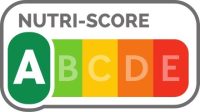By Studio Legale Corte
The AGCM has published, in bulletin no. 5/2023, the sanction against VIVIL A. Müller GmbH & Co. KG for the sale and marketing of VIVIL brand sweets and confectionery products , bearing the Nutriscore on the front of the pack. In summary, the AGCM’s position is that the use of the Nutri-Score, although in principle it can be used as a facilitating factor for food information, in the absence of clear indications to the consumer on the intrinsic characteristics of the system and of a broad educational campaign on the importance of a balanced diet and a healthy lifestyle, constitutes an unfair commercial practice pursuant to articles 20, 21, letter b), and 22 of the Consumer Code. It has therefore imposed an administrative pecuniary sanction on the company.
Nutri-Score is a food labelling system developed by a group of French university researchers called EREN, and, although it has been heavily criticised in some countries, including Italy, it is used in several European countries, including France and Germany.
In Italy, the Nutri-score system has always been contested, and the AGCM has intervened in several cases, reiterating the deceptive nature of this system of stickers on the front of the package, if it lacks clarification regarding the limits of the information provided.
2. The legal basis on which the Nutri-score is based and the AGCM’s interpretation
The AGCM first of all pointed out that the adoption of this system cannot be justified by art. 35 of EU Regulation 1169/2011, as also pointed out by the Commission. The Nutriscore, therefore, must be anchored to art. 36 of EU Regulation 1169/2011 , which, in recognising the possibility of providing additional information on foods on a voluntary basis, subordinates this choice to compliance with the principle of clarity of information in order to avoid misleading the consumer.
He then reiterated that the AGCM’s position “does not entail bans on placing on the market, modifications, testing or withdrawal from the market of products and is taken on the basis of a harmonised regulatory framework at Union level: Directive 2005/29/EC on unfair commercial practices between businesses and consumers in the internal market” , which in Italy is transposed into the Consumer Code.
3. Nutri-score stamp and AGCM criticisms
The Nutri-score aims to simplify the identification of the nutritional values ​​of a food product. It expresses the nutritional quality of the food through two related scales: a chromatic one divided into five shades from green to red and an alphabetic one with letters ranging from A (highest quality) to E.
Food products are divided into five categories, based on a score calculated using a complex algorithm that subtracts the total value of the “unfavorable†elements (energy/calories, saturated fatty acids, simple sugars, sodium) from the “favorable†elements (percentage of fruit, vegetables, legumes and oilseeds, olive oil, walnuts and rapeseed; fiber, proteins). Foods with very low scores are assigned to category A (green), while those with the highest scores are assigned to category E (red).
The score refers to a quantity of product equal to 100 g or 100 ml.
On the graphics of the Nutri-score, the AGCM observes “the overall methods of creation and communication of the traffic light label provide an apodictic view of the healthiness of a product , since the synthetic graphic and chromatic representation (green/A = “healthy food” – red/E = “unhealthy food”) does not take into account the many variables that affect the correctness of the person’s diet: genetic characteristics, general health conditions, age, lifestyle, work activity, as well as the interaction of the product “promoted” by the traffic light with other foods consumed.
In doing so, communication based solely on the label in question risks, for example, underestimating the potential harmful effects that the consumption of significant quantities of green-labeled foods can have on the health of the consumer”
4. Criticisms of the Nutri-score algorithm criteria
The AGCM reserves severe criticism for the operating criteria of the NutriScore generating algorithm. It notes that it does not take into account all the parameters relevant from a nutritional point of view (e.g. micronutrients, macronutrients, absence of hydrogenated fats) and that it leads to the assignment of an unbalanced score. Some components are not considered, such as, for example, fibers, the daily intake of which is correlated with a better quality of the diet. Furthermore, for the purposes of building the final result, the NutriScore system recognizes a greater incidence to the unfavorable elements (40 points) and a much lower one to the favorable ingredients (15 points); in fact, the NutriScore score appears more sensitive to the variation of the “negative” elements (energy, sugars, fats, sodium) than to that of the “positive” elements (fibers, proteins, percentage of fruit/vegetables/legumes/nuts). The presence of the latter is relevant only when a certain threshold level (in weight or percentage) is exceeded, but the greater or lesser distance from the threshold is irrelevant in any way and therefore the final score is determined in an unbalanced way. The AGCM therefore comes to the conclusion that “The failure to explicitly state this specific aspect does not allow the consumer to fully appreciate the evaluation assigned by the professional to the food” , and again that “The incomplete information thus conveyed leads the consumer to overlook the overall effect of all the nutrients present in a food, also linked to their quantity and frequency of intake.”
5. Criticisms of the reference to 100g instead of the portion
The Nutriscore is based on 100g of product, and not on the portion of food consumed. On this front too, the AGCM is critical: “In the absence of adequate clarifications, the fact that the NutriScore system is focused on fixed quantities (equal to 100g or 100ml) is suitable for conveying misleading information because the evaluation does not concern the portion of food corresponding to the average daily requirement recommended for a balanced diet, but rather a dose that could be significantly different from the ordinary intake.”
6. Unfair commercial practice related to the use of Nutriscore on VIVIL sweets
The procedure concerns the application of a front-of-pack (FOP) labelling system, called NutriScore, on the front of branded sweets packages.
VIVIL. These sweets, distributed in Italy with packaging that also contains descriptions and information in Italian, are assigned the “B†category by Nutriscore, which is green. The traffic light label is prominently displayed on the packaging, without further specifications or elements clarifying the meaning of this information, and the risk is that it ” could generate in the average consumer the erroneous belief that the food marked with green is always and in any case to be preferred, regardless of the interaction it develops with the overall diet followed, as well as the subjective conditions of the individual who consumes it.”
The AGCM, applying what was observed on the Nutri-score to the use of the stamp system on VIVIL brand sweets, has therefore reached the following conclusion: “the affixing of the traffic light stamp on “VIVIL†brand products – in the absence of contextual and adequate clarifications – is in violation of articles 20, 21, letter b), and 22 of the Consumer Code, as it is contrary to professional diligence and likely to induce the average consumer to believe that those presented are healthy food consumption choices in an absolute sense and that the product judged as green can be considered the “best†in its category to the detriment of orange or yellow products. More precisely, the lack of clarifying elements in relation to the characteristics and limits of the methodology used does not allow the consumer to use the expressed assessment in an informed manner”.
7. What to expect in the future
The AGCM’s position does not seem likely to change and therefore, at present, the use of the Nutri-score in Italy, without the clarifications requested by the AGCM, is at high risk of sanctions. At European level, there is a great debate on the possibility of adopting a single supplementary labeling scheme that helps consumers make healthy food choices. This aim has been reiterated in the context of the Green Deal and, in particular, of the so-called “Farm to Fork” strategy, which sets the objectives to guide the transition towards a more balanced and environmentally sustainable food system, intervening on many aspects of the supply chain, from agriculture to food labeling. It is certain that the search for a labeling system to promote healthy (and therefore sustainable) eating has created many clashes, in particular between those who support the validity of the Nutri-score, and those, like Italy, who believe that a type of informative, and not evaluative, communication is needed, which is reflected in the Nutrinform Battery. The Commission, which initially announced that it would present a legislative proposal to harmonise, on a mandatory basis, FOP Schemes across the European Union by the end of 2022, has postponed the decision, and it will therefore be necessary to wait for a solution at European level.
8. Advice on food labelling and assistance in the event of disputes regarding administrative sanctions
Studio Legale Corte is a law firm that has been dealing with food law since 1921.We provide
advice on food labeling and defend companies in cases of disputes regarding
administrative sanctions relating to food labeling, taking into account the case law and practice of the Authorities responsible for controls.




